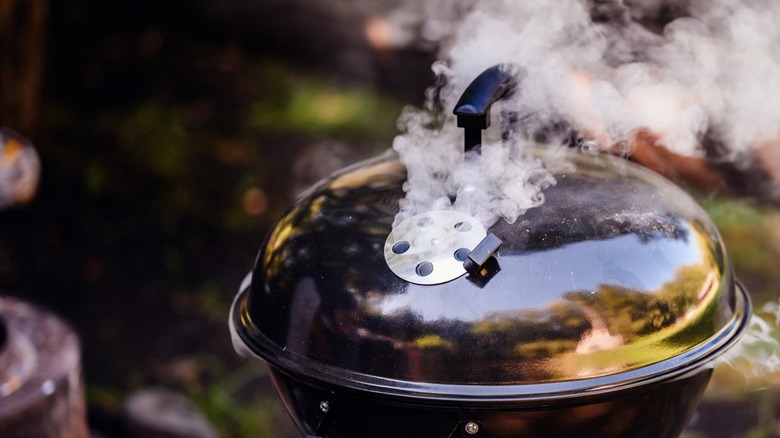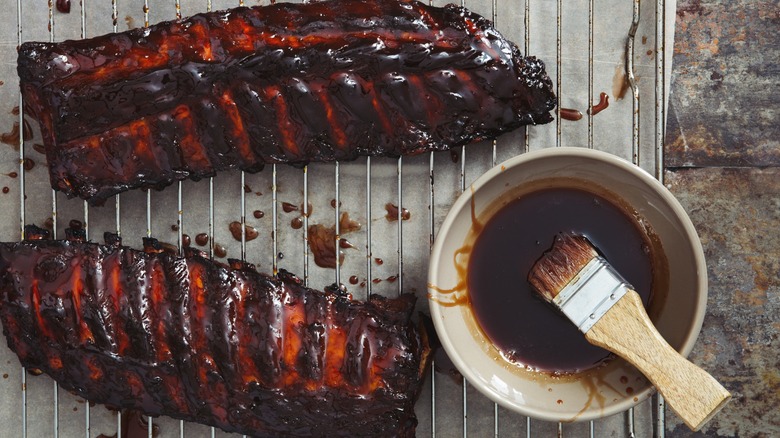A Handy Guide To When To Open Vs Close The Vent On Your Grill
We may receive a commission on purchases made from links.
If you're new to the grilling world, you may be surprised to learn that those little vents on the top, bottom, or side of your grill can make a huge difference in how your food cooks if you have a charcoal grill. Gas grills may have vents on the sides or back, but they mostly rely on their burners for temperature control. On charcoal grills, the vents control the intensity of the fire and therefore how fast or slow the grill's contents come to temperature. Moving these vents helps regulate the temperature inside your grill.
The bottom vent, also known as the intake damper, is beneath the coals, where it draws in oxygen to feed the fire. You should always be mindful of the vent on the bottom of the grill since it controls the fire. Just like you, fire needs air to breathe. And the longer your grill burns, the more oxygen the fire eats. Keeping the intake vents open replaces that oxygen. The faster you replace the oxygen, the hotter it burns, so partially closing the bottom vents lowers the temperature. Close them all the way, and the fire goes out.
The top vent, or exhaust damper, is on the lid and allows heat and smoke to escape. But the top grill vents don't do much unless you close the lid. If you do close the lid, you need the exhaust damper at least partially open. It helps draw air in from the bottom vents and allows carbon monoxide and dioxide to escape, keeping the fire lit.
Using your vents to control temperatures
Opening all the vents when you first turn on the grill is helpful for heating it up faster. And you also need them open for anything that needs seriously high heat, like achieving a substantial char on perfectly grilled veggies. Steaks and hamburgers generally cook well with both vents open. The intense temperatures give thick cuts a nice exterior char while keeping the inside nice and juicy — that's why ribeye is the perfect cut for grilling.
Alternatively, if you're making something you need to cook low and slow, like ribs or pulled pork, partially closing the vents lowers the heat and closing the top vent specifically lowers the smoke. When smoking meat, the resulting smoke should be thin and blue to almost invisible, not thick and white and billowing out of the grill. Too much smoke can ruin your food, so if you see a lot of it, open the vents.
Keep an eye on the internal temperature of your food with a meat thermometer. You can use an inexpensive digital model like the Alpha Grillers instant-read or invest in a wireless meat probe with a fancy app, like the ChefiQ Sense Smart wireless meat thermometer. If the outside is getting done faster than the inside, start closing the bottom vents to lower the temperature. Closing the top vents will lower the temperature too, but it will also reduce the smoke. With a bit of practice, you'll soon be grilling like a master.

